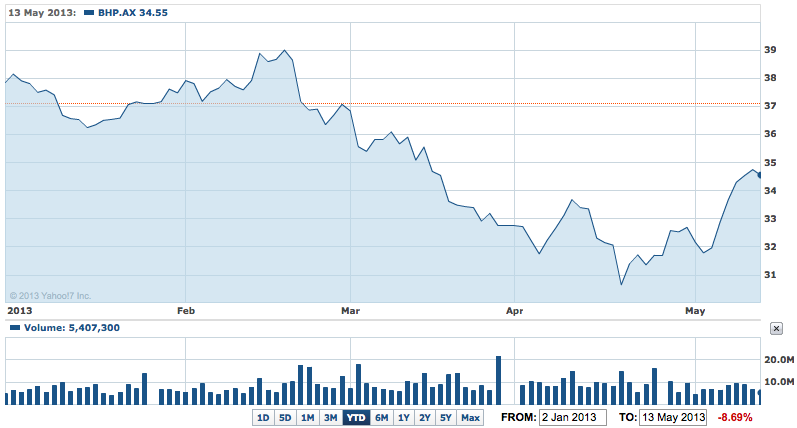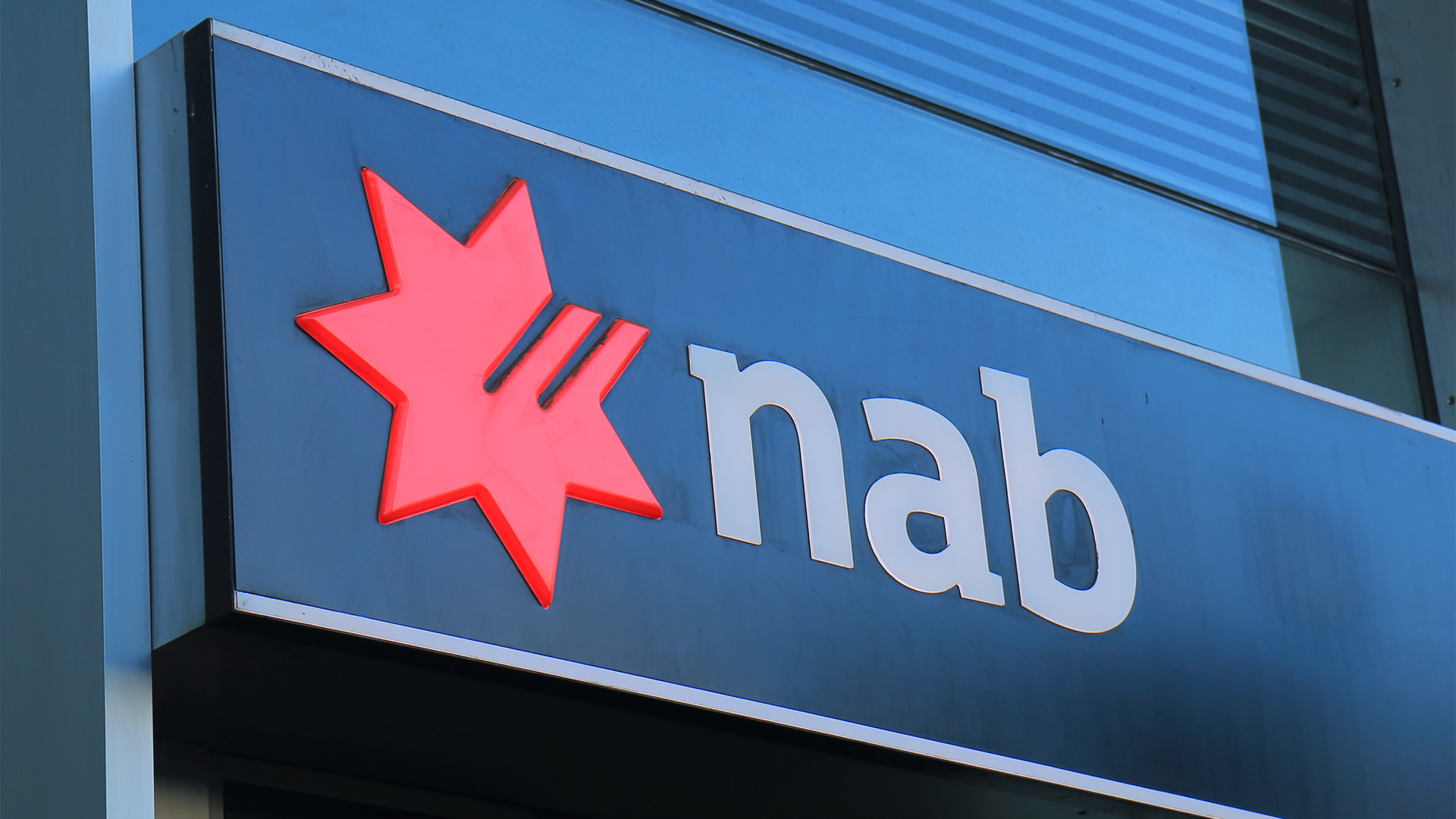Forget the federal budget – much the changes won’t see the light of easy, if at all until after the September 14 election, except the increase in the Medicare levy.
Instead focus on the biggest news yesterday which was that BHP Billiton’s new CEO, Andrew Mackenzie has committed the resources giant to cutting capital spending and redirecting cash flows back to shareholders if good new projects can’t be found.
But while the new boss of BHP is on his austerity drive, investors will be watching he fall in the value of the Australian dollar and the rise in the value of the greenback to see what the impact is, if sustained.
The Aussie dipped more than a cent overnight to trade around 98.80 US cents – but because BHP does its accounts and reports in US dollars, the impact won’t be easily worked out. There will be a favourable impact on Australian dollar income, especially for its key iron ore and coking coal operations.
But the currency change won’t divert the company’s new drive for cost and operating efficiencies and maximising cash flow, and wherever possible, excess capital being returned to shareholders.
The new approach from the company and its just in the chair CEO was captured in this quote from a speech made overnight: Mr Mckenzie said that, "if our investment criteria cannot be met in any one project, product or geography we will redirect the capital elsewhere or we will not invest.”
BHP’s new boss sees more chance of shareholders getting higher returns

It follows the move last month by Woodside Petroleum to return capital via a special dividend. That move triggered an upsurge in speculation that the likes of BHP and its peers would follow.
His comments came in a speech at an investment conference in Spain overnight and after the local market closed. BHP shares rose 12c here yesterday to $US34.67.
Mr Mckenzie revealed that BHP’s capital commitments would peak at $US22 billion this year and decline “significantly” to $US18 billion next year as most of its large projects entered production.
“The rate of spending is expected to decline significantly thereafter,” he said, possibly to around $US15 billion annually or “perhaps even less”.
"The latter scenario would result in an even lower rate of investment and logically even more capital being returned to shareholders.”
It was a year ago this week that BHP chairman, Jac Nasser revealed that the company started hauling back on its aggressive spending program. The chairman said the company was backing away from an earlier commitment to invest $US80 billion on new projects over five years, including the biggest one of all, the huge Olympic Dam mine in South Australia.
Mr Mckenzie’s comments yesterday would indicate that Olympic Dam remains a distant dream in the new era of austerity and maximising capital efficiency and free cash flows.
His speech, the first since he was named as the new CEO in February (he took up the position officially last Thursday), is the first real indication from the major miner that it will redirect surplus capital back to the owners of the company by squeezing more from existing assets wherever possible.
"You will recognise my passion for our productivity agenda and this extends to our development projects," he said. "Put simply, we must challenge ourselves to increase returns from new investment, in the same way that we need to squeeze returns from our already installed infrastructure."
Rio Tinto, the world’s third biggest miner, has indicated that it is committed to spending another $US5 billion on its WA iron ore expansion, as well as cutting costs, curtailing exploration and selling off unwanted assets, such as diamonds and aluminium.
But Rio, unlike BHP, took a $US14 billion write down on its 2012 results on the cost of the acquisition of Alcan in 2007 and the poorly organised coal expansion in Mozambique.
BHP paid nearly $US6 billion in dividends to shareholders last year and would seek to build that or via special dividends. It has also spent around $US10 billion on a share buyback in the last couple of years.
BHP is also in the asset sale business, with around $US5 billion slated for disposal and it has cut costs by around $US1 billion via job losses, tougher cost controls and lower spending one exploration and project development.
Mr Mckenzie committed BHP to being "accountable" for factors it can control. He made it clear that he wants his management team to boost cash free cash flow, even when commodity prices don’t improve or move in the company’s favour.
He said that after spending $US3.6 billion on exploration over the past five years, the company is confident it will be able to operate in its major areas of interest – iron ore and coal in Australia, copper in Chile, and oil and gas in North America – for “decades” if not the rest of the century.
He said that BHP’s resources base has increased by more than 75% during the past five years, which is a tribute really to the management of former CEO, Marius Kloppers.













